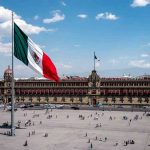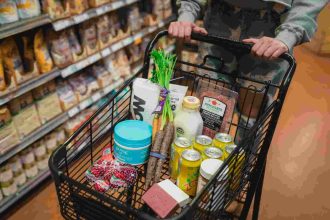For years Argentina has wrestled with one of the highest inflation rates in the world, a cycle that has drained household budgets and complicated economic planning. In 2025, the government is turning its focus to one of the most sensitive and politically charged aspects of inflation: food prices. Bread, meat, and cooking oil are more than just staples. They are symbols of daily survival, cultural identity, and political legitimacy. When food prices soar, the impact is immediate and visceral, sparking frustration in supermarkets, on dinner tables, and eventually in the streets. The latest pivot in Argentina’s inflation fight aims to bring stability where people feel it most.
The new strategy combines a mix of subsidies, negotiated price controls, and targeted support for producers. Officials argue that by stabilizing food costs, they can provide immediate relief to families while also buying time for broader structural reforms to take hold. The measures are ambitious. They include agreements with major supermarket chains to cap prices on basic goods, financial assistance to small farmers to offset rising input costs, and tighter oversight of supply chains to curb speculation and hoarding. The goal is simple in principle but complex in practice: to ensure that Argentine families can put affordable food on the table without bankrupting the state or distorting markets.
The importance of this effort cannot be overstated. In Argentina, food is central to identity. From Sunday asados shared by families to empanadas served at local festivals, the culture is inseparable from what people eat. When inflation undermines access to these traditions, it does more than disrupt nutrition. It erodes morale and social cohesion. Politicians understand this deeply. That is why food price stability has become a priority not just for economists but for leaders seeking to maintain legitimacy.
The challenges, however, are formidable. Inflation in Argentina is not driven solely by food prices. It is a complex mix of currency instability, fiscal deficits, and external pressures. Currency depreciation makes imported inputs more expensive, while high public spending often fuels further inflationary pressure. Efforts to stabilize food prices risk clashing with these broader forces. Subsidies can ease pain in the short term but strain public finances. Price controls can curb spikes but may lead to shortages if producers cannot cover costs. The balancing act is delicate, and missteps could backfire.
Producers are caught in the middle of this equation. Farmers and ranchers argue that while they support stability, they cannot operate at a loss. Rising costs of fuel, fertilizers, and machinery squeeze their margins, and global markets influence the prices they can fetch abroad. Many fear that strict controls at home could discourage production, leading to scarcity that worsens the very problem the government is trying to solve. To address this, authorities are offering targeted credits, tax breaks, and technical support to producers who comply with price agreements. Whether these incentives will be enough remains uncertain.
Consumers, meanwhile, remain skeptical. Ordinary Argentines have lived through cycles of inflation and stabilization plans before, many of which collapsed under the weight of political shifts or economic shocks. For families, promises of relief are measured not in speeches but in the cost of groceries week after week. A kilo of beef that suddenly costs twice as much as the previous month is not just an economic statistic. It is a lived crisis. The trust deficit between government policy and household experience is one of the toughest obstacles to overcome.
The political consequences are significant. Food inflation has toppled governments and fueled protests in Argentina’s past. Leaders know that if supermarket shelves remain out of reach for ordinary citizens, patience will run thin. That is why the latest plan is being rolled out with an aggressive communication strategy. Officials highlight early successes, showcasing reduced prices on key items and promising greater oversight to ensure compliance. The government is betting that visible improvements, even if modest, will buy credibility and time to pursue longer term reforms.
International observers are watching closely. Argentina’s struggles with inflation are often cited as cautionary tales for other nations. If this new pivot succeeds, it could serve as a model for balancing immediate consumer needs with structural economic reforms. If it fails, it risks deepening Argentina’s economic malaise and discouraging foreign investors who already view the country as high risk. Global lenders are also monitoring the situation, knowing that Argentina’s ability to manage inflation affects its capacity to meet international obligations.
There is also a regional dimension. Argentina is a major agricultural exporter, and its policies influence markets beyond its borders. If domestic controls reduce exports, neighboring countries may feel the pinch. Conversely, if subsidies stimulate production, they could enhance Argentina’s competitiveness abroad. The balancing act between serving domestic consumers and participating in global markets is a constant source of tension for policymakers.
Amid these complexities, there are reasons for cautious optimism. Recent reports indicate that food price increases have slowed in some categories, offering a glimmer of relief to consumers. Local cooperatives are stepping in to support stability, connecting farmers directly with communities and bypassing intermediaries. Digital tools are also playing a role, with apps that track supermarket prices in real time and empower consumers to make informed choices. These innovations show that solutions may come not only from government decrees but also from grassroots initiatives and technological creativity.
For ordinary citizens, the stakes remain immediate. Inflation is not an abstract concept but a force that shapes what meals look like, how families budget, and whether traditions can be sustained. For parents, stability means being able to plan school lunches. For grandparents, it means affording the ingredients for cherished recipes. For workers, it means knowing that wages will stretch far enough to cover basics. The government’s pivot to food price stability is thus more than economic management. It is a bid to restore confidence in daily life.
As 2025 unfolds, Argentina’s inflation fight will be judged not by international analysts or macroeconomic charts but by the experiences of ordinary households. If the cost of bread, beef, and vegetables steadies, the policy will be deemed a success, at least in the short term. If prices continue to spiral, frustration will grow, and the cycle of mistrust will deepen. For a country that has endured decades of economic turbulence, the outcome of this strategy could mark either the beginning of renewed confidence or another chapter in a long saga of disappointment.
Featured Image Source: Marcelo Nacinovic / iStock









